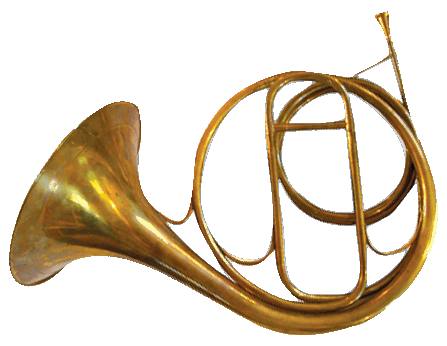|
Newsletter |
||||||||||||||||||||||
 NEXT
NEXT
Tempesta di Mare Love collides with indecision and jealousy in a young Handel’s witty and rarely performed Italian setting of the Polyphemus story, Aci, Galatea & Polifemo, a tale that he’d later famously go on to recompose in English. David Newman (No Strings Attached and Hoshanna!) plays the scorned, raging, one-eyed Cyclops Polifemo, an enormously virtuosic role. In this Italian version of the story, the sea-nymph Galatea (Lorie Gratis) finds Polifemo’s menace and danger darkly alluring and must decide between him and her beau, Aci, a “trousers” role, played by soprano Clara Rottsolk (Ain’t Love Grand). Tempesta di Mare artistic co-director Richard Stone leads the 20-piece baroque orchestra, complete with brass, woodwinds, strings and continuo. Performances take place Friday, May 15 at 8:00 at the Presbyterian Church of Chestnut Hill and Saturday, May 16 at 8:00 at St Mark’s Church in Center City. Tickets are $25-35, $20 seniors, $10 full-time college students. Grade school ages 8-18 free. More details below in this issue of the e-newsletter. The music to this two-act cantata of 1708 employs Handel’s peerless mastery of melody and dramatic specificity with a level of economy particular to his youthful soujourn in Italy. The score remained incomplete until the late 1980’s, when pages of the autograph score containing the concluding portions of the the second act were relocated. A complete edition became available in 2000, making these East-Coast premiere performances possible. “Representing the perfect marriage between musical instinct and meticulous scholarship” (Fanfare), Tempesta di Mare is named for Vivaldi’s concerto meaning “storm at sea,” a name that reflects composers’ belief in the power of music to portray drama. Led by Artistic Co-Directors Gwyn Roberts and Richard Stone with Concertmaster Emlyn Ngai, Tempesta has received NEA Artistic Excellence awards for the 4th consecutive year. Tempesta di Mare’s recent third CD release on Chandos, a live-concert recording of orchestral music by Fasch, has earned a 5-star rating (Goldberg Magazine), following the acclaimed Flaming Rose, Handel’s German Arias with soprano Julianne Baird, and the world-premiere recording of lute concerti by Silvius Leopold Weiss. Tempesta di Mare is supported in part by the William Penn Foundation, the Philadelphia Music Project, the Pennsylvania Council on the Arts, The Presser Foundation, the Philadelphia Cultural Fund, and the Musical Fund Society of Philadelphia.
|
||||||||||||||||||||||
|
Table of contents
Articles go to Top of Page |
||||||||||||||||||||||
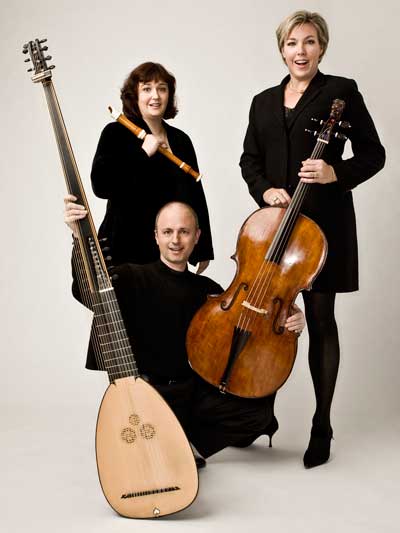
NEWS
Tempesta’s Upcoming NYC Debut
Tempesta di Mare makes its New York debut on Sunday, May 3 at 5 pm For tickets or more information, visit the Frick’s website. |
||||||||||||||||||||||
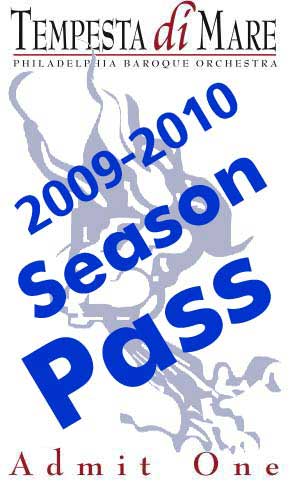
2009-2010 SEASON PASS
Early Bird Sale
Get your 2009-2010 Season Pass at 2007 prices and join us next season for two monumental cycles in their entirety: Bach’s beloved Brandenburg Concertos—alongside some of the works that inspired their creation—and Zelenka’ Lamentations of Jeremiah. These first-for-Tempesta performances of the complete Brandenburgs will be presented over four programs. A Tempesta di Mare Season Pass is a bundle of good things rolled into one:
Don't wait. Get your Pass now for only $125! (Offer good through June 30.)
|
||||||||||||||||||||||
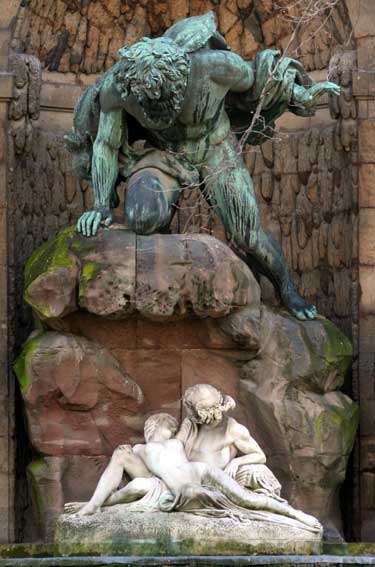
FEATURE Scary Monsters and Shining Youth True love versus a big, clumsy, one-eyed monster in the throes of a major crush Handel liked the myth of Acis, Galatea and Polyphemus so much that he set it three times: first in Italian as Aci, Galatea e Polifemo (1708, also known as “Sorge il dì”), and twice later in English, quite differently, as Acis and Galatea (1718 and 1732). Although he was only 23 when he wrote Aci, Galatea e Polifemo—to be performed by Tempesta di Mare on May 15 and 16—no less an authority than eminent musicologist George Buelow calls it “a small masterpiece.” Just two years before, at 21, Handel had upped stakes from Germany and moved to Italy to follow his dream of mastering opera. His Italian experiences transformed the young composer from an aspirant with talent to the Handel we know and love. Aci, Galatea e Polifemo displays Handel’s first flush of power as a peerless musical storyteller. It’s clear why the Acis myth attracted him. It has just about everything you’d want in a story. Passion: gallant Acis and the beautiful sea-nymph Galatea are in love. Conflict: the repulsive Cyclops Polyphemus wants Galatea for himself. Drama: Polyphemus brutally murders Acis. Poignancy: Galatea grieves. A happy ending (of sorts): the gods transform dying Acis into a river to mingle forever with Galatea in the sea. With material like that, Handel had plenty of action to work with. But he was able to make Aci as much about character as action, like all good stories. Polyphemus is unforgettable right from his first appearance when he pounds onto stage snarling that “Alecto’s hissing snakes and Scilla’s hungry howls surround me on every side (Sibilar l’angui d’Aletto),” in a deep, bass rumble that’s just a little too rumbly against an ever-so-slightly overdone fanfare of trumpets. Monstrous and overblown, indeed. But one of Aci’s achievements is how sympathetic Polyphemus appears, too. By using the musical equivalent of pratfalls—bumping way up high and way down low—but still providing a effect of grace, Polyphemus’s aria, “When the torch is extinguished, the confused moth…is no longer happy (Fra l’ombre e gl’orrori),” portrays a blighted yet still wistful and soulful creature. And Aci isn’t just all about Polyphemus. Acis and Galatea are far more than a cookie-cutter damsel and champion. Aci’s death scene is eerily naturalistic in the aria “With my blood I shed my soul (Verso già l’alma col sangue),” which slows down and then stops to the beats of the hero’s failing heart. (FEATURE continues below) |
||||||||||||||||||||||
|
WHEN & WHERE
|
||||||||||||||||||||||
|
||||||||||||||||||||||
 SPOTLIGHT
SPOTLIGHT
The Community that by Jennifer Hayman Anyone who attended our With Cheerful Hearts performance or has perused any of Tempesta’s marketing for this season has witnessed the beautiful artwork of jewelry designer Sheila Fernekes. Her yin-yang heart beaded brooch became the central icon for our With Cheerful Hearts advertising, and the item was raffled off to a lucky winner at our Sunday performance at Old St Joseph’s Church. In addition, a stunning moon-face cameo, carved out of bone, was donated for the Saturday evening Chestnut Hill performance. Not only are these jewelry pieces aesthetically beautiful, they also help to tell the story behind the music that inspired their creation.
“Gwyn is a terrific teacher,” Sheila raves. “She is so good at uncovering what is special in baroque music.” She believes this sense of discovery is also very evident in the performances of Tempesta di Mare, citing Fresh Fasch and Great Quire of Heav’n among her favorite concerts. “There is such care in everything that Tempesta does. From the incredible amount of research that goes into concert programming to the in-depth program notes, it is so obvious that there is great attention to detail and also great intention in their work. They provide the listener with an opportunity to experience the music in a completely new context.” This experience, she says, has been a big inspiration in her work, and a great marriage of her two loves: art and baroque music. Sheila is a graduate of Rutgers University, and worked for several years as an elementary school art teacher and graphic designer before choosing to devote her talents to jewelry design exclusively. Sheila is especially fond of sculptural jewelry design: using ancient bead weaving techniques to create contemporary jewelry, and cites Alexander Calder and Arlene Fisch as influences. “These artists were able to use old techniques in new ways to create distinctly modern art.” This, she believes, is similar to what is achieved in the modern world premiere performances of Tempesta di Mare. Sheila admits that she often listens to baroque music while she works. This is evident in her Concerto, Sonata, and Fantasia jewelry collections. These collections definitely reflect the structure, color, and development of their musical namesakes. For instance, the pieces in the Concerto collection have a focal bead or pendant upon which everything else is woven. Sheila’s artwork often incorporates Swarovski crystals, glass beads, and other materials that she acquires through her travels with her husband. Each piece requires 8-20 hours of work. “It is hard to part with some pieces. I can only hope they go to a good home, to someone who enjoys wearing them as much as I enjoyed creating them,” she says. The idea for the yin-yang heart came from a discussion Sheila had with Gwyn about Blow’s “With Cheerful Hearts,” an ode for New Year’s Day, 1690, and Bach’s Trauer Ode. Gwyn said that those two contrasting pieces included on January's program represented love's joys and sorrows. This is represented in the balance of yin and yang and the 3-dimensional texture of the heart pendant. Coincidentally, “With Cheerful Hearts” was written to commemorate the marriage of William III and Mary II, the only joint sovereigns in the history of England who were allowed to reign with equal power, again calling to mind the yin-yang concept. When designing the moonface brooch, the inspiration was more subconscious. It was not until she had nearly completed the piece that Sheila realized she was channeling the spirit of Christine Eberhardine, the Queen of Poland for whom J.S. Bach’s Trauer Ode was written. Eberhardine was also a strong female monarch, and was known by her Protestant countrymen as “The Pillar of Saxony” after refusing to convert to Catholicism for political gain. The poised, somber moonface is the central icon, enclosed in a shroud of beadwork of rich reds and violets. This so beautifully depicts poet Johann Christoph Gottsched”s words: “You model of all queens! You earned all the jewels which now transform your brow,” in the final recitative of the Trauer Ode. By focusing on the common threads of color, texture, and pattern, Sheila Fernekes diminishes the line between the past and the present, between classical and contemporary, and between art and music, and offers a wearable representation of musical pieces from the baroque era and the stories that accompany them. For more information about the artwork of Sheila Fernekes, please visit www.sheilafernekesdesign.com.
|
||||||||||||||||||||||
|
Click on the program icons above to visit our Series page |
||||||||||||||||||||||
Tempesta di Mare • 1034 Carpenter St • Philadelphia PA 19147 • 215-755-8776 • www.tempestadimare.org

 at the Frick Collection. Soprano Clara Rottsolk joins Gwyn Roberts, recorder and flute, Richard Stone, archlute and theorbo, and Rebecca Humphrey, cello, for an all-Italian program featuring instrumental and vocal chamber music by Scarlatti, Castello, Strozzi, Monteverdi, Locatelli, Vivaldi and more. Come hear why Time Out New York says “New Yorkers should envy Philadelphia for its sparkling baroque ensemble Tempesta di Mare.”
at the Frick Collection. Soprano Clara Rottsolk joins Gwyn Roberts, recorder and flute, Richard Stone, archlute and theorbo, and Rebecca Humphrey, cello, for an all-Italian program featuring instrumental and vocal chamber music by Scarlatti, Castello, Strozzi, Monteverdi, Locatelli, Vivaldi and more. Come hear why Time Out New York says “New Yorkers should envy Philadelphia for its sparkling baroque ensemble Tempesta di Mare.”

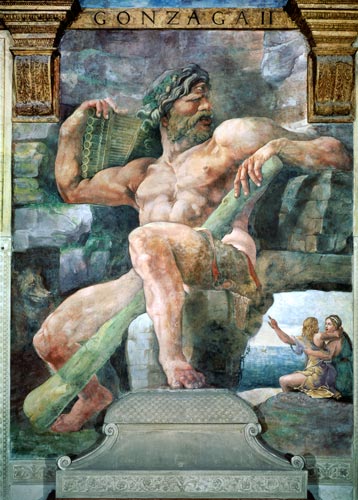 Until recently, Aci, Galatea e Polifemo had almost disappeared, notwithstanding the fame and popularity of the English-language Acis and Galatea.* Handel wrote Aci as a serenata for the wedding of a Neapolitan noblewoman and, though it was performed a few times subsequent to the event, like so many works of the era it fell into disuse. No complete manuscript even existed until long-missing pages of Aci were found in a British collection, folded into a manuscript of the English Acis and Galatea. The 2000 Hallische Händel-Ausgabe (Handel’s complete works) publication of the complete cantata has only recently made it possible to bring this early jewel of the Handel repertoire back to life.
Until recently, Aci, Galatea e Polifemo had almost disappeared, notwithstanding the fame and popularity of the English-language Acis and Galatea.* Handel wrote Aci as a serenata for the wedding of a Neapolitan noblewoman and, though it was performed a few times subsequent to the event, like so many works of the era it fell into disuse. No complete manuscript even existed until long-missing pages of Aci were found in a British collection, folded into a manuscript of the English Acis and Galatea. The 2000 Hallische Händel-Ausgabe (Handel’s complete works) publication of the complete cantata has only recently made it possible to bring this early jewel of the Handel repertoire back to life.

 Sheila is both a baroque music appreciator and performer. An avid recorder player for about fourteen years, Sheila performs regularly in the Princeton area with a Renaissance trio and other baroque ensembles. It was through mutual music connections in Princeton that Sheila met our artistic co-director Gwyn Roberts, and began studying with her approximately six years ago.
Sheila is both a baroque music appreciator and performer. An avid recorder player for about fourteen years, Sheila performs regularly in the Princeton area with a Renaissance trio and other baroque ensembles. It was through mutual music connections in Princeton that Sheila met our artistic co-director Gwyn Roberts, and began studying with her approximately six years ago.

